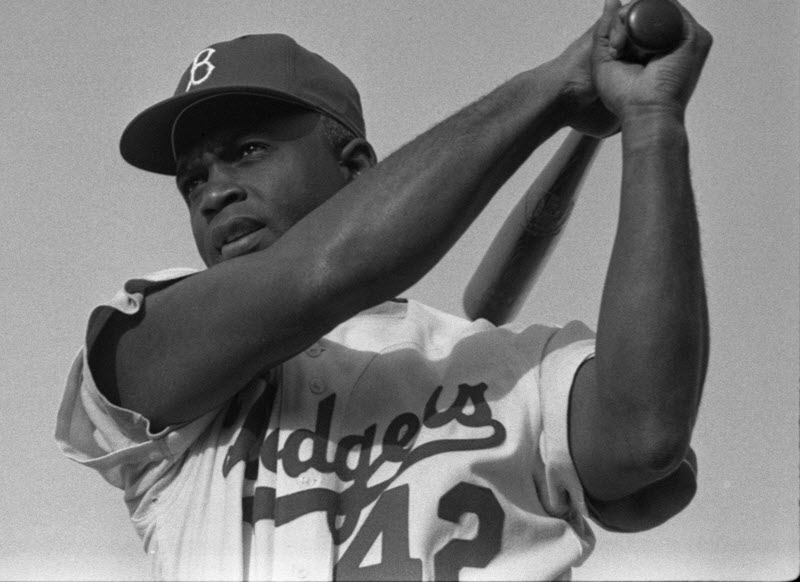The 75th Anniversary of Jackie Robinson
| By Shirelle Phelps|
On April 15, 1947, Jackie Robinson broke baseball’s long-standing color barrier when he debuted for the Brooklyn Dodgers. Since 2004, Major League Baseball (MLB) has celebrated this historic date annually. One way the MLB honors Robinson is by having all Major League players and on-field staff wear Robinson’s number 42 during the game on that day. It is the only time you will see “42” on a MLB uniform, as his number was retired in 1997. Throughout Major League Baseball, April 15 is known as Jackie Robinson Day.
Jack Roosevelt Robinson was born on January 31, 1919, in Cairo, Georgia. The youngest of five children, he was raised by a single mother. Robinson attended high school and junior college in Pasadena, California, where he played four sports: football, basketball, track, and baseball. He continued his education at UCLA, where he became the university’s first student to win varsity letters in four sports. Despite his athletic success, Robinson was forced to leave UCLA in 1941, just shy of graduation, due to financial hardship. He later joined the army. Read more about Jackie’s early life with Gale In Context: Biography.
After leaving the army, Robinson played professional football in Hawaii and baseball with the Kansas City Monarchs of the Negro American League, where he drew the attention of the president and general manager of the Brooklyn Dodgers, Branch Rickey. On October 23, 1945, Rickey signed Robinson to play on a Dodger farm team, the Montreal Royals of the International League. Robinson led that league in batting average in 1946, and was brought up to play for Brooklyn in 1947. The rest is history.
Breaking the color barrier wasn’t easy—Robinson faced extreme racism: Fans hurled bottles at him; teammates openly protested against having to play with him; and opposing players deliberately pitched balls at his head and spiked him with their shoes during deliberate rough slides into bases. He also faced death threats and Jim Crow laws that forbade a Black player to stay in hotels or eat in restaurants with the rest of the team.
Despite these obstacles, Robinson distinguished himself as one of the game’s most talented and exciting players, recording an impressive .311 career batting average. After retiring from baseball in 1957, he became a vocal civil rights activist as a spokesperson for the National Association for the Advancement of Colored People (NAACP), and made appearances with Martin Luther King Jr. Read more about Jackie’s life after baseball.
Robinson made a huge impact on society, as he was the first Black person in the Baseball Hall of Fame, in Cooperstown, New York; his autobiography, I Never Had It Made, was published in 1972; and in 1984, he was posthumously awarded the Presidential Medal of Freedom, the highest honor for an American civilian. Jackie Robinson died of a heart attack at home in Stamford, Connecticut, on October 24, 1972.
As we celebrate Jackie Robinson’s 75th anniversary, we will not forget his outstanding achievements in the world of baseball and civil rights.
You can learn more about Jackie Robinson and others by introducing your students to leaders who made history, and uncover the truth behind their stories by visiting their topic pages in Gale In Context: Biography. You can also download social media posts and other marketing materials on support.gale.com.

Not a Gale In Context: Biography subscriber? Learn more about this authoritative database >>

Meet the Author
Shirelle Phelps is the director of content development. She enjoys vacationing with her family, finding treasures at consignment shops, and going on bike riding adventures with her husband.

